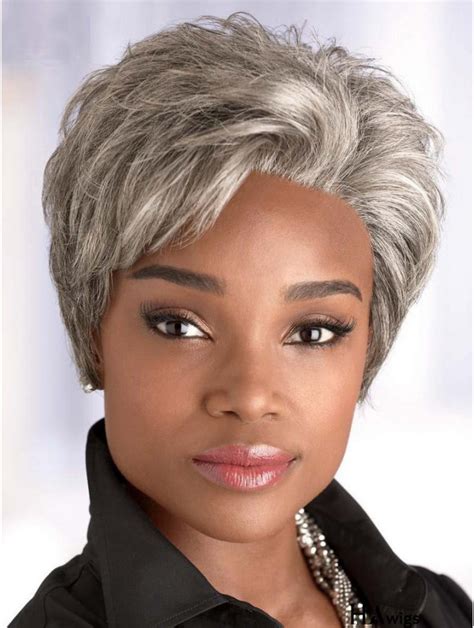The Importance of Wigs for Elderly Women
As we age, our hair undergoes natural changes. It may become thinner, gray, or dry. For elderly women, wigs offer numerous benefits that can address these age-related hair challenges.

Key Benefits of Wigs
- Conceal Thinning Hair: Wigs can effectively cover up areas of hair loss and provide a fuller appearance.
- Eliminate Gray Hair: Wigs allow women to experiment with different hair colors without the need for harsh dyes.
- Protect Delicate Hair: Natural hair can become damaged from styling, environmental factors, and medical treatments. Wigs offer protection from these elements.
- Boost Confidence: A well-fitting wig can enhance a woman’s self-esteem and make her feel more attractive.
Types of Wigs Available
Synthetic Wigs
- Affordable and widely available
- Less natural-looking than human hair wigs
- Prone to tangling and frizz
Human Hair Wigs
- Natural and realistic appearance
- More expensive than synthetic wigs
- Require more maintenance and styling
Monofilament Wigs
- Cap construction that mimics the appearance of a scalp
- Provides a natural look
- More delicate and requires careful handling
Lace Front Wigs
- Thin, transparent lace base that blends seamlessly with the skin
- Creates a realistic hairline
- Typically more expensive than other wig types
How to Choose the Right Wig
Personalized Consultation
Consulting with a wig specialist can provide personalized guidance on wig style, material, and fit.
Consider Hair Texture and Density
Choose a wig that matches your natural hair texture and density for a seamless integration.
Measure Your Head
Determine the circumference of your head to ensure a snug and comfortable fit.
Adjust the Fit
Most wigs come with adjustable straps and combs to allow for a customized fit.
Caring for Your Wig
Washing
- Use cold water and a mild shampoo designed for wigs.
- Submerge the wig and gently agitate.
- Rinse thoroughly with cold water.
Drying
- Air dry the wig on a wig stand.
- Avoid using heat styling tools, as this can damage the fibers.
Styling
- Brush the wig gently with a wide-tooth comb.
- Use wig-specific styling products to hold the desired shape.
- Avoid using excessive heat when styling.
Tips for Enhancing Wig Comfort
- Wear a wig cap to protect your scalp from irritation.
- Avoid wearing the wig for extended periods, especially during sleep.
- Store the wig on a wig stand or in its original packaging when not in use.
FAQs
-
Q: Can I wear a wig every day?
A: Yes, you can wear a wig every day, but it is recommended to give your scalp a break occasionally. -
Q: How often should I wash my wig?
A: The frequency of washing depends on how often you wear the wig. As a general guideline, wash every 7-10 wears. -
Q: Can I color a synthetic wig?
A: No, you cannot color a synthetic wig, as the fibers are not porous. -
Q: How long do wigs last?
A: The lifespan of a wig varies depending on the type of wig, how often it is worn, and how well it is cared for. With proper care, a wig can last up to 2 years. -
Q: Can I sleep in a wig?
A: It is not recommended to sleep in a wig, as this can cause discomfort and damage the wig. -
Q: How much do wigs cost?
A: The cost of a wig varies depending on the type of wig, the materials used, and the brand. Prices can range from $100 to $2,000+. -
Q: Where can I find wigs for elderly women?
A: Wigs can be purchased from online retailers, beauty supply stores, and wig salons. -
Q: How do I style a lace front wig?
A: To style a lace front wig, apply a light hold adhesive to the lace and blend it seamlessly with your skin. Then, style the hair as desired using wig-specific products.
